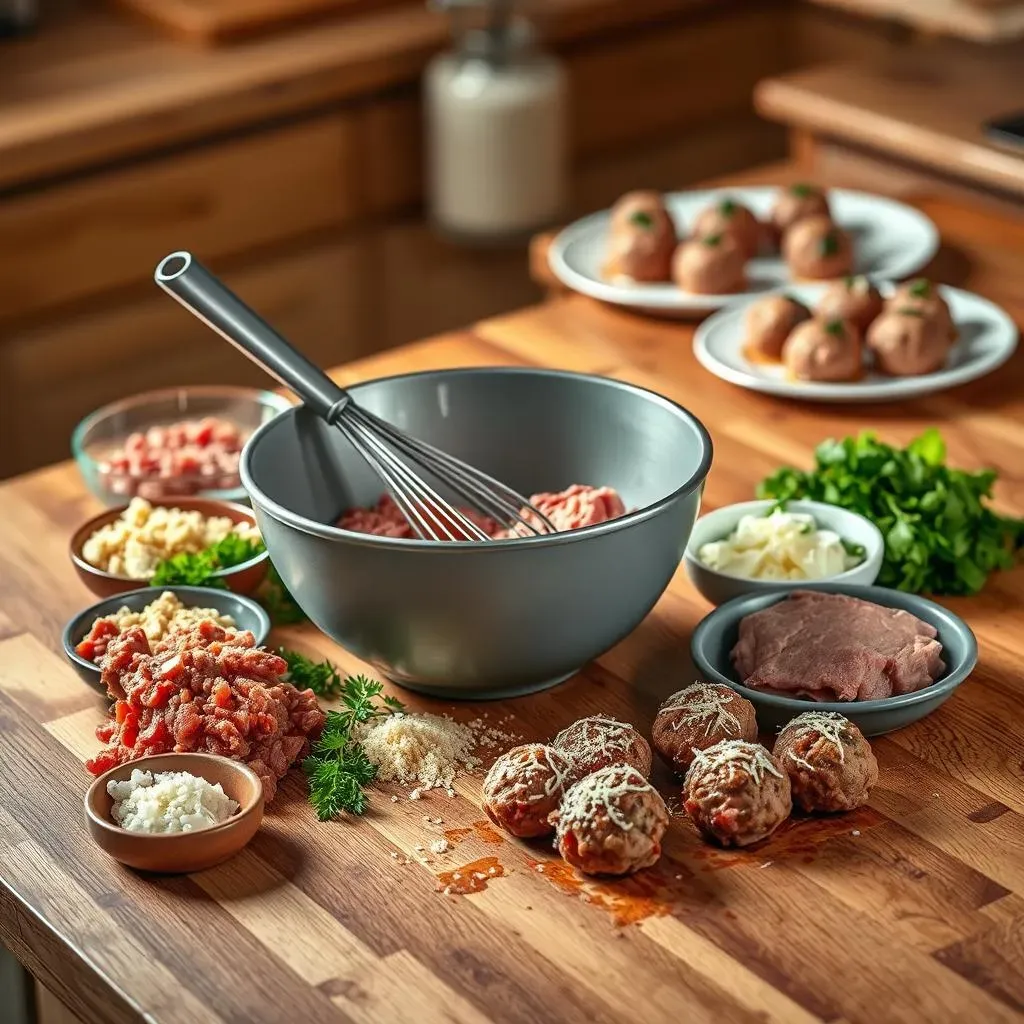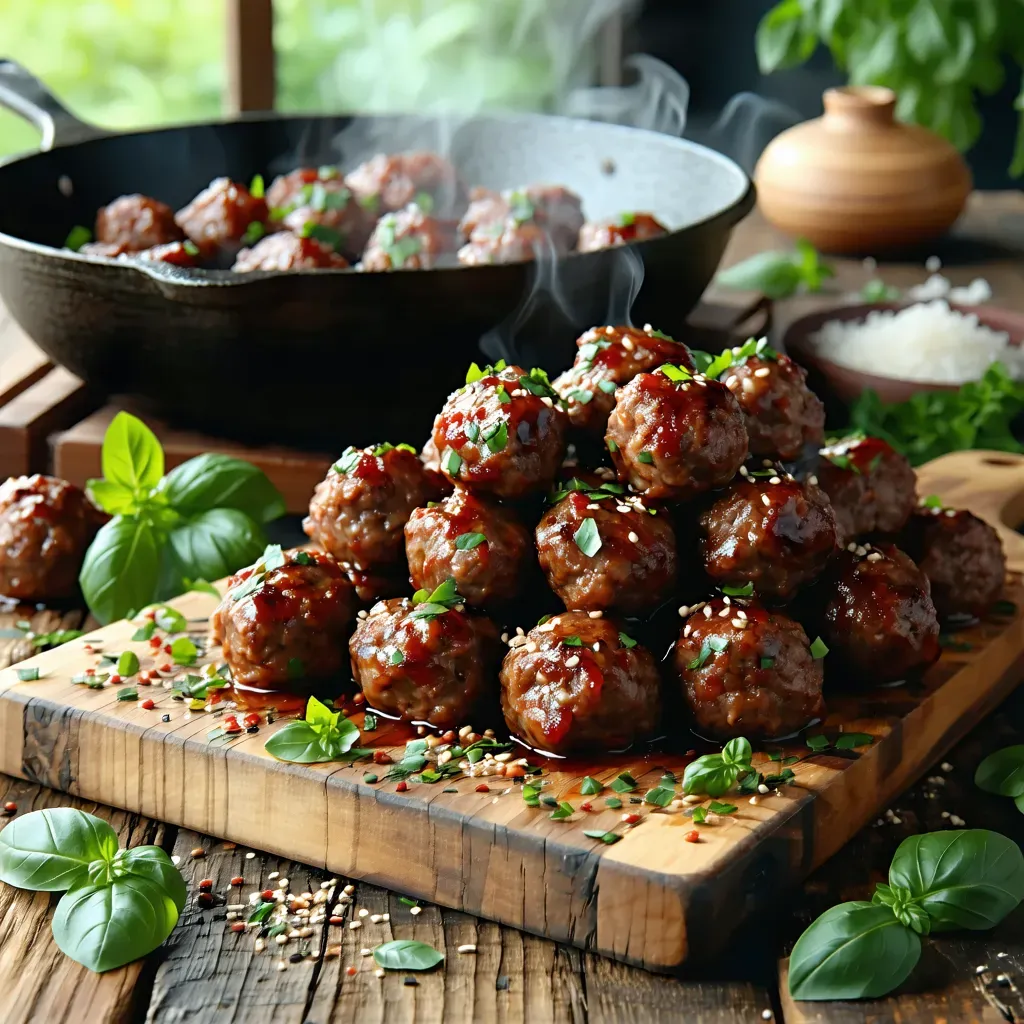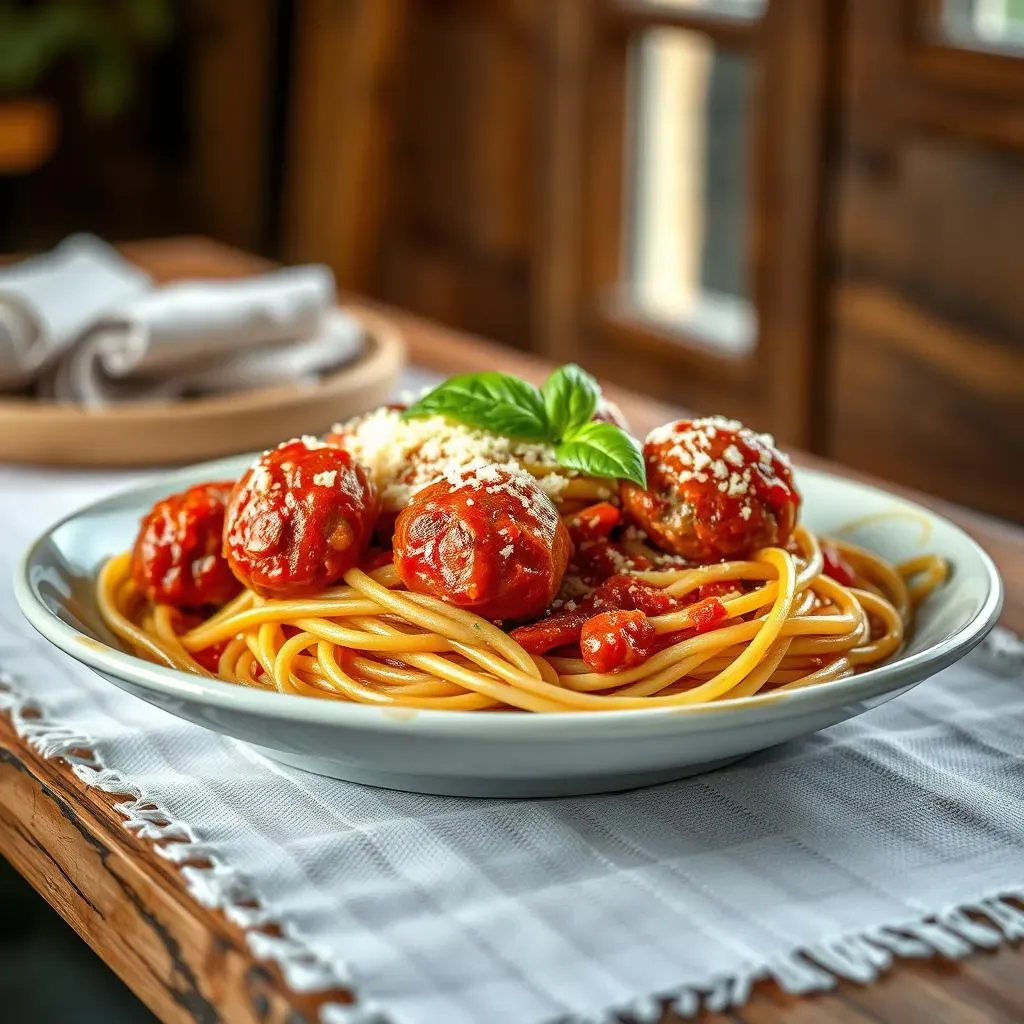Table of Contents
Are you ready to elevate your dinner game? This article is your ultimate guide to creating unbelievably juicy and flavorful pork and beef meatballs. We'll walk you through a simple yet incredibly effective pork and beef meatballs recipe, step-by-step, ensuring even a novice cook can achieve restaurant-quality results. But we won't stop there! We'll also explore essential tips and tricks to perfect your meatball-making skills, covering everything from the ideal meat blend to achieving that perfect texture and mouthwatering flavor. Finally, get ready to unleash your creativity with a collection of exciting and delicious ways to serve your homemade masterpieces, from classic spaghetti and meatballs to more adventurous culinary creations. So, grab your aprons and let's embark on this delicious journey together! Prepare to be amazed by how easy it is to make restaurant-quality pork and beef meatballs right in your own kitchen.
The Best Pork and Beef Meatball Recipe: A StepbyStep Guide

The Best Pork and Beef Meatball Recipe: A StepbyStep Guide
Getting Started: Ingredients and Prep
Let's kick things off with the star of the show: our incredible pork and beef meatball recipe! First, gather your ingredients. You'll need a good mix of lean ground beef and flavorful ground pork – about a pound of each is perfect for a hearty batch. Don't forget the classic Italian staples: fresh parsley, garlic (lots of it!), grated onion, and a good quality Parmesan cheese. For binding, we'll use breadcrumbs soaked in milk for extra moisture and tenderness. Finally, season generously with salt, pepper, and a touch of Italian seasoning. For a richer flavor, consider adding a splash of Worcestershire sauce. See, already it’s starting to sound delicious! Now, let's talk about prep. Finely chop your parsley and garlic. Grate your onion; trust me, grated is better than diced in this case. Next, soak your breadcrumbs in milk – about 10 minutes should do it. This simple step makes a huge difference in the final texture.
Once your ingredients are prepped, it's time to combine them. In a large bowl, gently mix the ground beef and pork together. Next, add your soaked breadcrumbs, parsley, garlic, Parmesan, and grated onion. Stir in your seasonings and Worcestershire sauce (if using). Mix everything until just combined; don't overmix, or your meatballs will be tough. Gently form the mixture into balls – about 1.5 inches in diameter is a good size. Now, you have a choice: bake them or fry them. We'll cover both methods later. For now, let’s focus on the baking method. Pre-heat your oven to 375°F (190°C). Line a baking sheet with parchment paper to prevent sticking. Arrange your meatballs in a single layer and bake for about 20-25 minutes, or until they are cooked through and nicely browned. This is a simple way to make delicious and healthy meatballs. If you're looking for a quicker option, check out our recipe.
Ingredient | Quantity | Notes |
|---|---|---|
Ground Beef | 1 lb | Lean is best |
Ground Pork | 1 lb | Adds richness |
Breadcrumbs | 1 cup | Soaked in milk |
Parsley | 1/4 cup | Freshly chopped |
Garlic | 2 cloves | Minced |
Baking vs. Frying: Which Method Suits You?
Now, a little debate: baking or frying? Both methods yield delicious results, but they offer different advantages. Baking is often considered healthier, as it requires less oil. It's also a hands-off cooking method, allowing you more time to focus on other things. Plus, oven-baked meatballs usually result in a slightly lighter texture. On the other hand, frying offers a crispier exterior and a richer, more intense flavor. Frying does, however, require more attention and cleanup.
If you choose frying, heat about 2 tablespoons of olive oil in a large skillet over medium heat. Carefully add your meatballs, ensuring they aren't overcrowded. Fry them in batches, turning occasionally, until they are golden brown and cooked through. This method takes a bit more time and effort but delivers a fantastically crispy result. For a detailed guide on frying, see our post on which contrasts both methods. Once your meatballs are cooked, whether baked or fried, let them cool slightly before serving.
- Baking: Healthier, easier cleanup, lighter texture.
- Frying: Crispier exterior, richer flavor, requires more attention.
Serving Suggestions: Beyond Spaghetti
While spaghetti and meatballs is a classic for a reason, don't limit yourself! These versatile meatballs are amazing in so many dishes. Try them in a hearty meatball sub, nestled in a comforting meatball casserole, or even as a delightful addition to your favorite soup. Their rich flavor pairs beautifully with creamy sauces, tangy marinades, and even spicy chili. Experiment and discover your favorite combinations!
For instance, consider serving your meatballs over creamy polenta, creating a comforting and flavorful dish. Or, slice them in half and use them as a topping for a pizza. The possibilities are truly endless! If you're looking for more inspiration, check out our recipe for a delicious and hearty meal.
Mastering the Art of Pork and Beef Meatballs: Tips and Tricks for Perfection

Mastering the Art of Pork and Beef Meatballs: Tips and Tricks for Perfection
The Meat Matters: Choosing the Right Ground Meats
Let's talk about the foundation of your delicious meatballs: the meat! The ideal blend is usually a 50/50 mix of lean ground beef and ground pork. The beef provides a leaner base, while the pork adds incredible richness and juiciness. However, feel free to experiment! For a lighter option, you could substitute some of the pork with ground turkey or even chicken, but keep in mind that the final texture might be slightly different. Remember, the fat content of your ground meats will directly impact the juiciness of your meatballs. A slightly higher fat content (around 80/20 for beef) will result in incredibly moist and tender meatballs. If you are on a low-fat diet, you might consider using leaner options. For more on choosing the right ground beef, check out our guide on .
Another crucial factor is the freshness of your meat. Use high-quality ground meats, preferably from a local butcher if possible. Fresh meat will have a much more vibrant flavor and will result in superior meatballs. Also, make sure to handle your meat properly to avoid contamination. Always wash your hands thoroughly after handling raw meat and use separate cutting boards and utensils for raw and cooked foods. For more tips on handling ground beef, check out our article on for meatballs.
- Lean ground beef (80/20)
- Ground pork
- Optional: Ground turkey or chicken
Beyond the Basics: Enhancing Flavor and Texture
Now let's dive into the exciting part: maximizing flavor and texture. One often-overlooked trick is to pre-cook your aromatics. Sautéing your minced garlic and grated onion before adding them to the meat mixture will deepen their flavor significantly. The gentle heat mellows their sharpness, allowing their sweetness to shine through in the final product. It takes just a few minutes and makes a world of difference. Don't be afraid to experiment with different herbs and spices! Fresh herbs like basil, oregano, and thyme are classic choices, but feel free to add a pinch of red pepper flakes for a little heat or some fennel seeds for a unique twist. For some delicious herb combinations, check out our post on .
The secret to perfectly textured meatballs lies in the gentle handling of the meat mixture. Don't overmix! Overmixing develops the gluten in the breadcrumbs, resulting in tough meatballs. Mix just until the ingredients are evenly distributed. Also, consider chilling the mixture for at least 30 minutes before forming the meatballs. This helps the flavors meld and makes it easier to shape the meatballs without them falling apart. Chilling also helps to firm up the mixture, making it easier to handle when forming the meatballs. For more make-ahead tips, see our guide on .
Tip | Benefit |
|---|---|
Sauté aromatics | Deeper flavor |
Don't overmix | Tender texture |
Chill the mixture | Easier shaping |
Cooking to Perfection: Baking, Frying, and Beyond
We've already touched on baking and frying, but let's explore some additional techniques for cooking your meatballs to perfection. For baking, ensure your meatballs are evenly spaced on the baking sheet to allow for even browning. If you notice some meatballs browning faster than others, you can rotate the pan halfway through the cooking time. You can also use a meat thermometer to ensure the internal temperature reaches 165°F (74°C) for food safety. For tips on reheating leftover meatballs, see our guide on .
If frying is your preferred method, maintain a consistent oil temperature to ensure even cooking. Avoid overcrowding the pan, as this will lower the oil temperature and result in greasy meatballs. For a crispier exterior, you can briefly sear the meatballs before finishing them in the oven. This combines the best of both worlds: a crispy exterior and a juicy interior. For more variations on cooking methods, see our article on . Remember, the key is to cook the meatballs until they are thoroughly heated through, achieving a juicy, tender interior with a flavorful crust.
Delicious Ways to Serve Your Homemade Pork and Beef Meatballs

Delicious Ways to Serve Your Homemade Pork and Beef Meatballs
The Classic: Spaghetti and Meatballs
Let's start with the timeless combination: spaghetti and meatballs! The rich, savory flavor of our pork and beef meatballs perfectly complements the simple elegance of perfectly cooked spaghetti. Toss it all together with a vibrant homemade marinara sauce, and you've got a dish that's both comforting and satisfying. For extra flavor, sprinkle some freshly grated Parmesan cheese on top. This is a dish that's loved by all ages, and it's a great way to use up any leftover meatballs you might have.
To make this even more special, consider adding a side of garlic bread. The crusty bread perfectly soaks up the delicious sauce, creating a delightful balance of textures and flavors. For a lighter option, serve your spaghetti and meatballs over a bed of fresh greens. This adds a pop of color and freshness to the meal. Looking for a variation? Check out our recipe for a twist on this classic.
- Spaghetti
- Marinara Sauce
- Garlic Bread (optional)
Beyond the Bowl: Creative Meatball Applications
But why stop at spaghetti? Our pork and beef meatballs are incredibly versatile. Think hearty meatball subs, where the juicy meatballs are nestled in a toasted roll with melted cheese and your favorite toppings. Or, consider a flavorful meatball casserole, a warm and comforting dish perfect for a chilly evening. The possibilities are truly endless, limited only by your imagination. For a fun appetizer, try serving your meatballs on skewers with a dipping sauce.
For a truly unique experience, try adding your meatballs to a hearty soup or stew. The meatballs add a satisfying protein boost and a delicious depth of flavor to the broth. Imagine a rich beef and barley soup, enhanced by the succulent meatballs. Or, perhaps a comforting minestrone, with its vibrant vegetables and hearty meatballs. For more soup ideas, check out our recipe. No matter how you choose to serve them, these meatballs are sure to impress.
Dish | Description |
|---|---|
Meatball Subs | Toasted rolls, melted cheese, your favorite toppings |
Meatball Casserole | Hearty, comforting, perfect for a chilly evening |
Soup or Stew | Adds protein and flavor to broth |
Make-Ahead Magic: Freezing and Reheating
One of the best things about these meatballs is their versatility. They freeze beautifully, making them a fantastic make-ahead option for busy weeknights. Simply cool the cooked meatballs completely, then place them in a freezer-safe container or bag. They'll keep in the freezer for up to three months. For more detailed instructions, check out our guide on .
Reheating is a breeze! You can reheat your frozen meatballs in the oven, microwave, or even on the stovetop. For oven reheating, simply place the meatballs on a baking sheet and bake at 350°F (175°C) until heated through. For stovetop reheating, gently warm them in a pan with a little oil or sauce. No matter your chosen method, your reheated meatballs will still be juicy and flavorful. For more reheating tips, check out our guide.